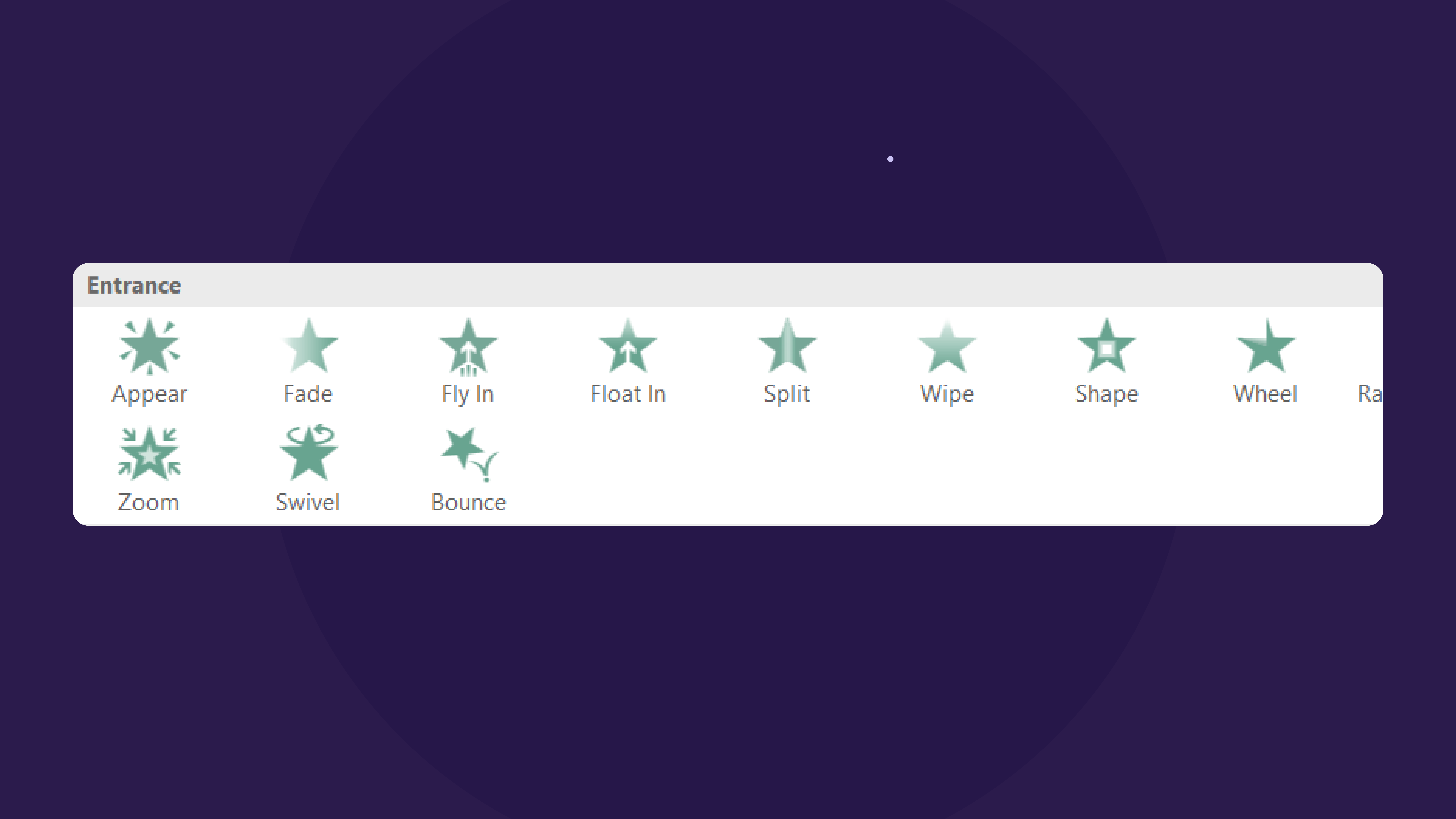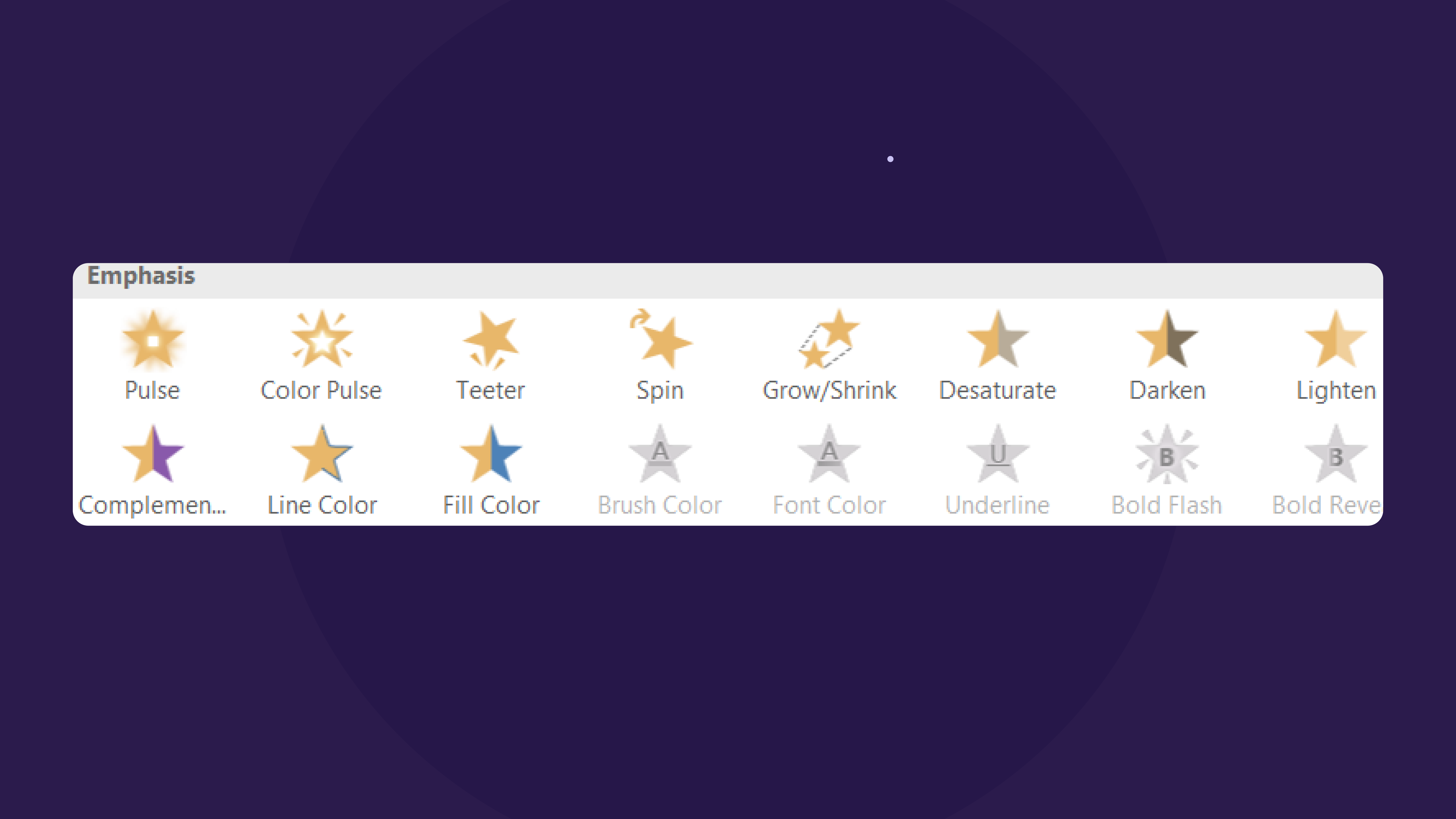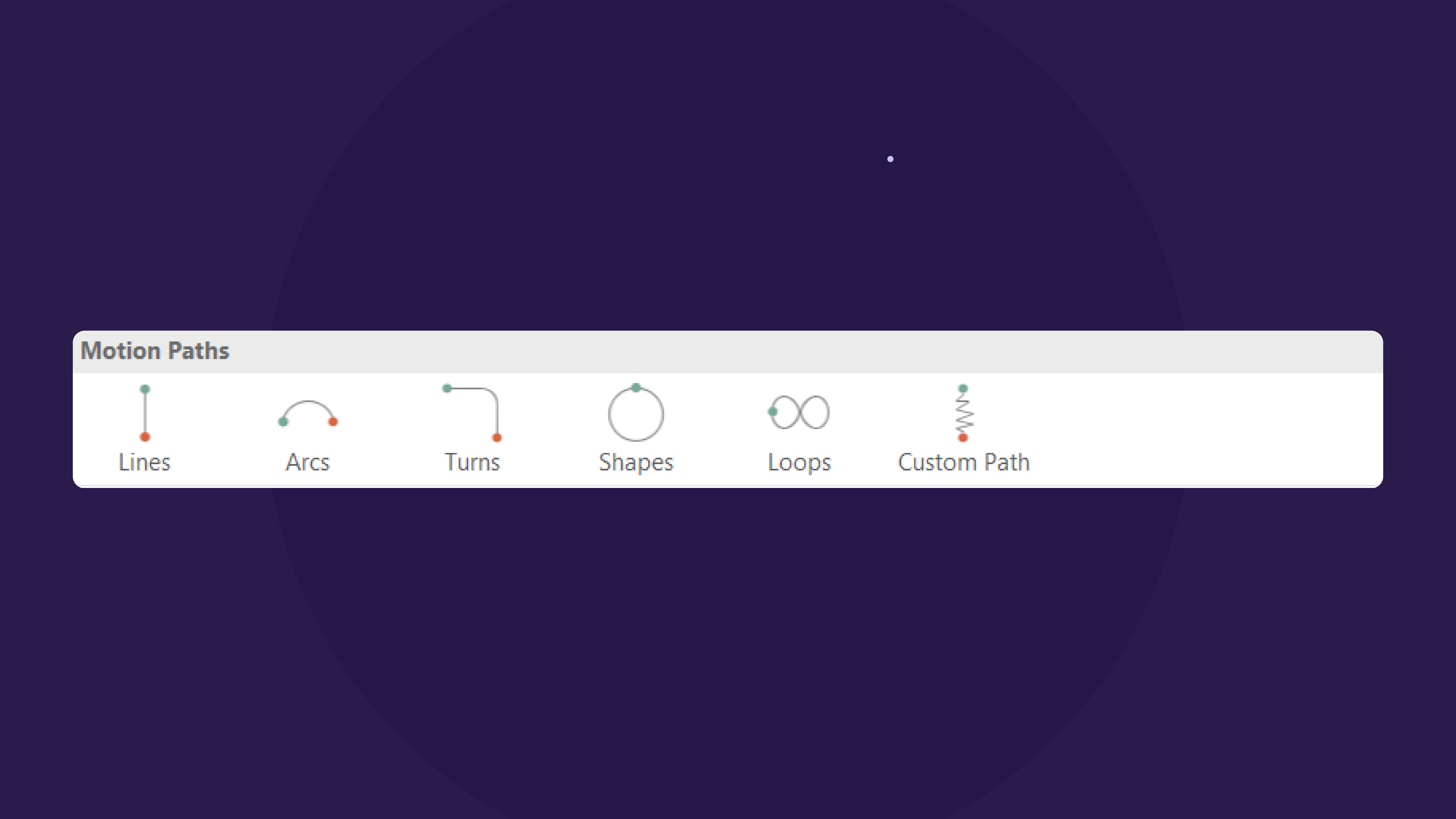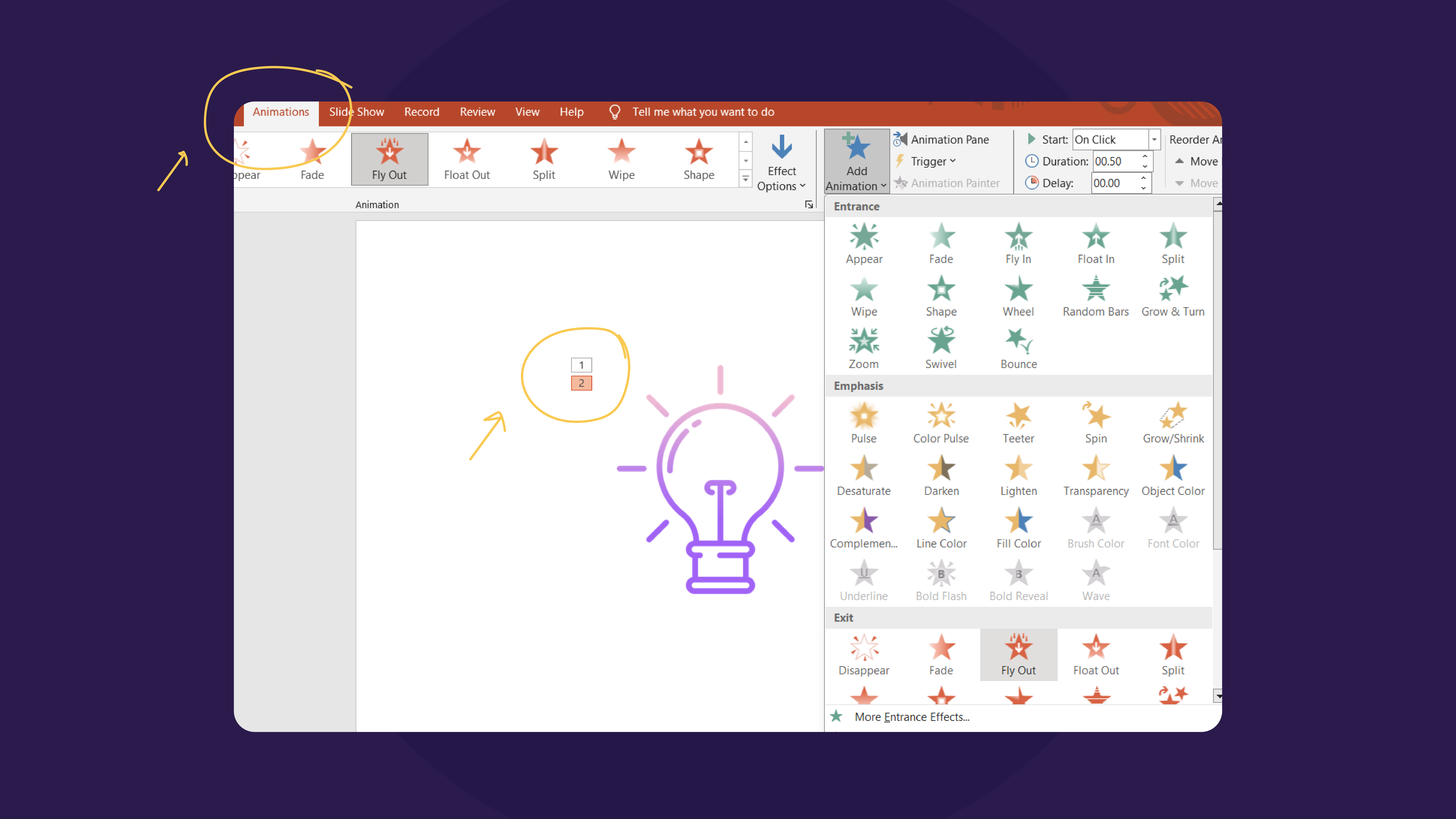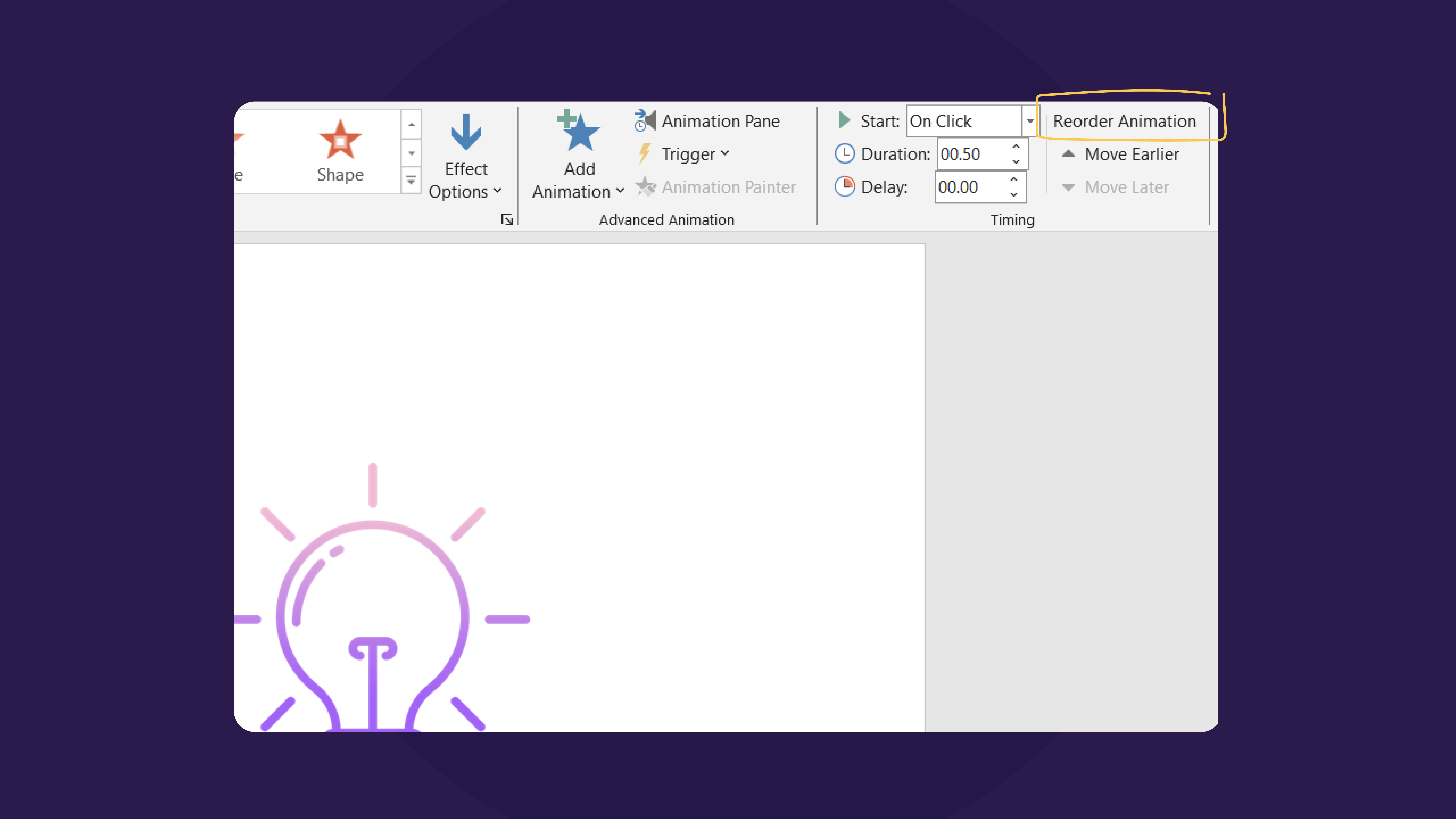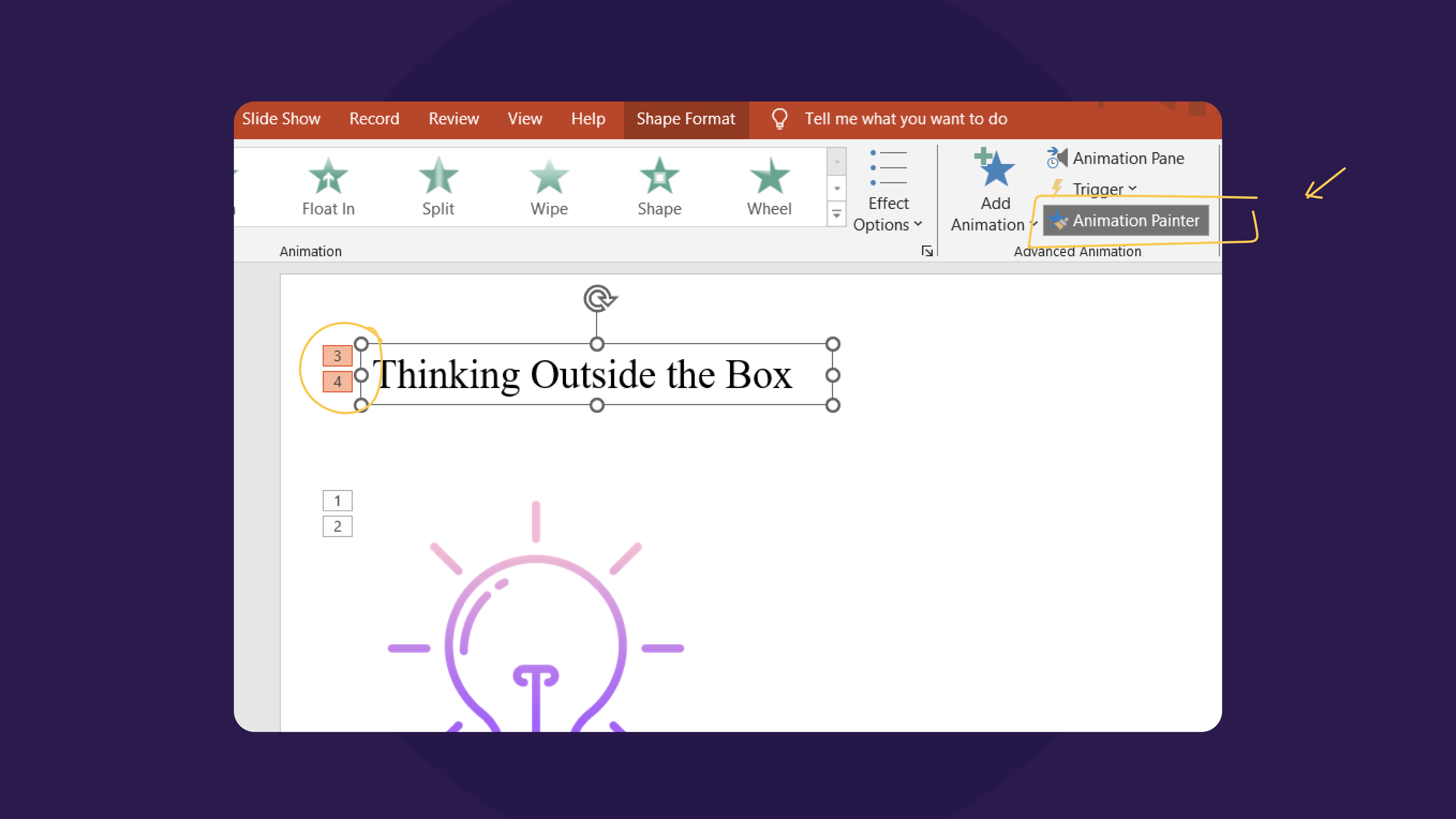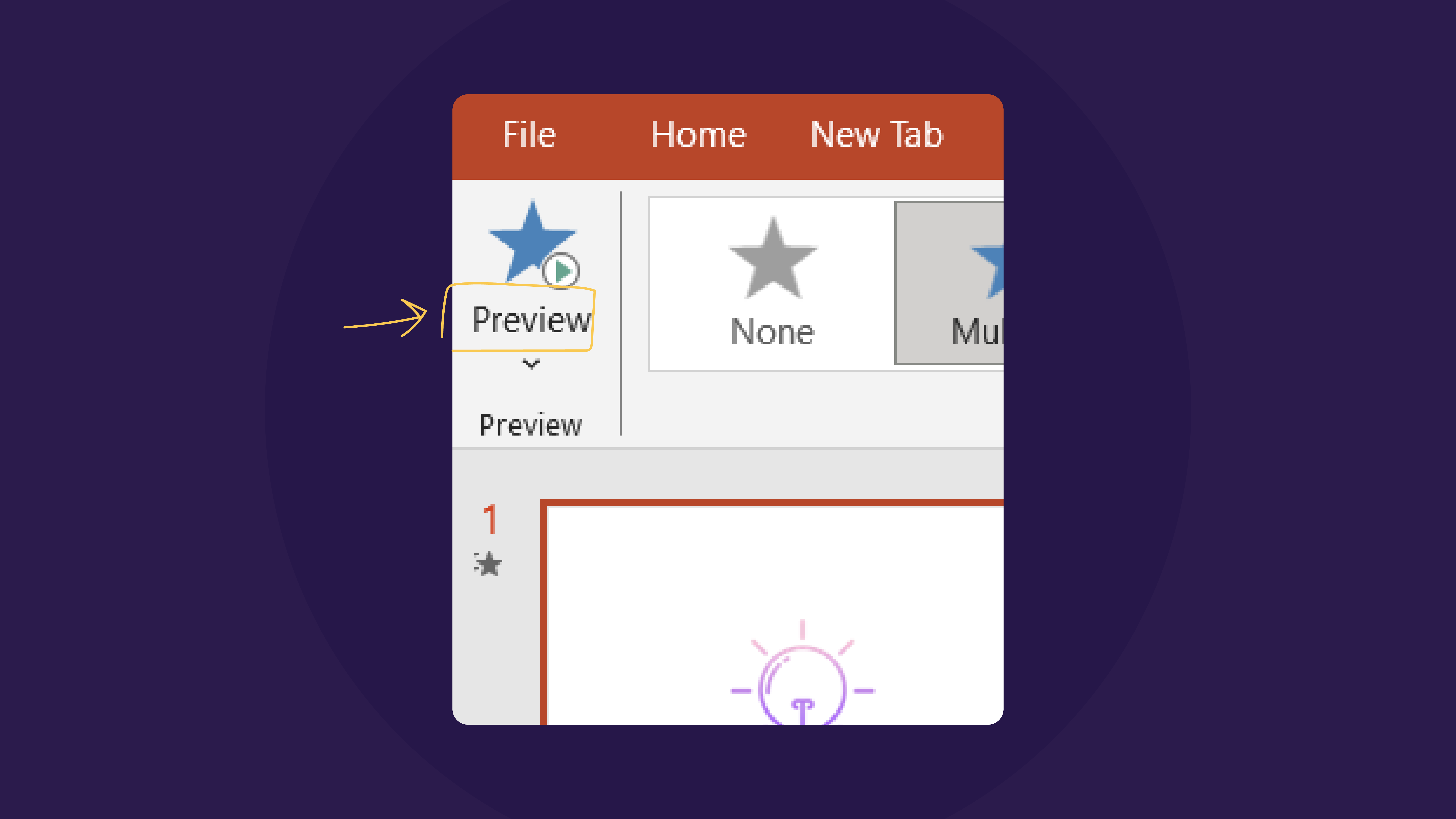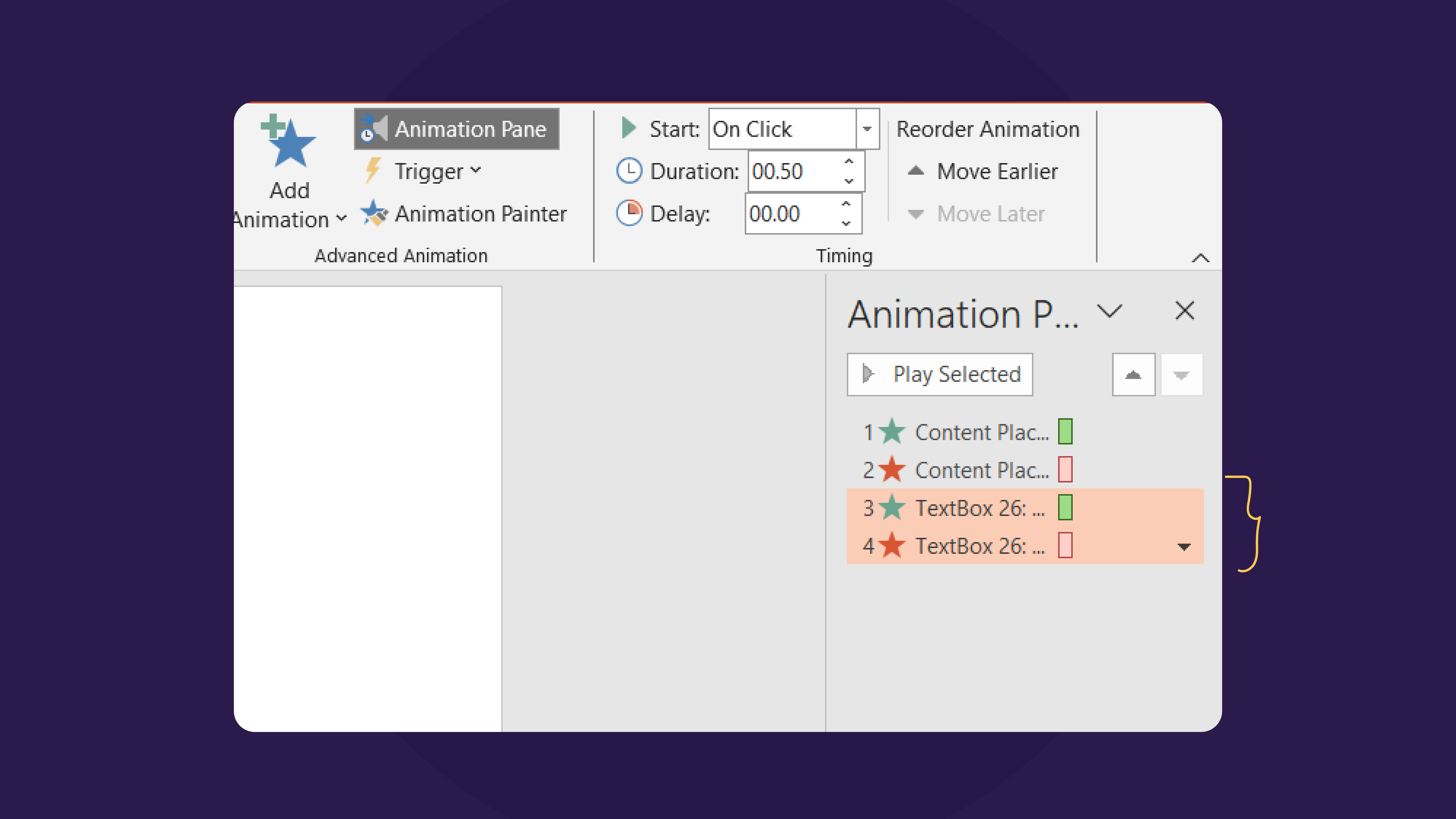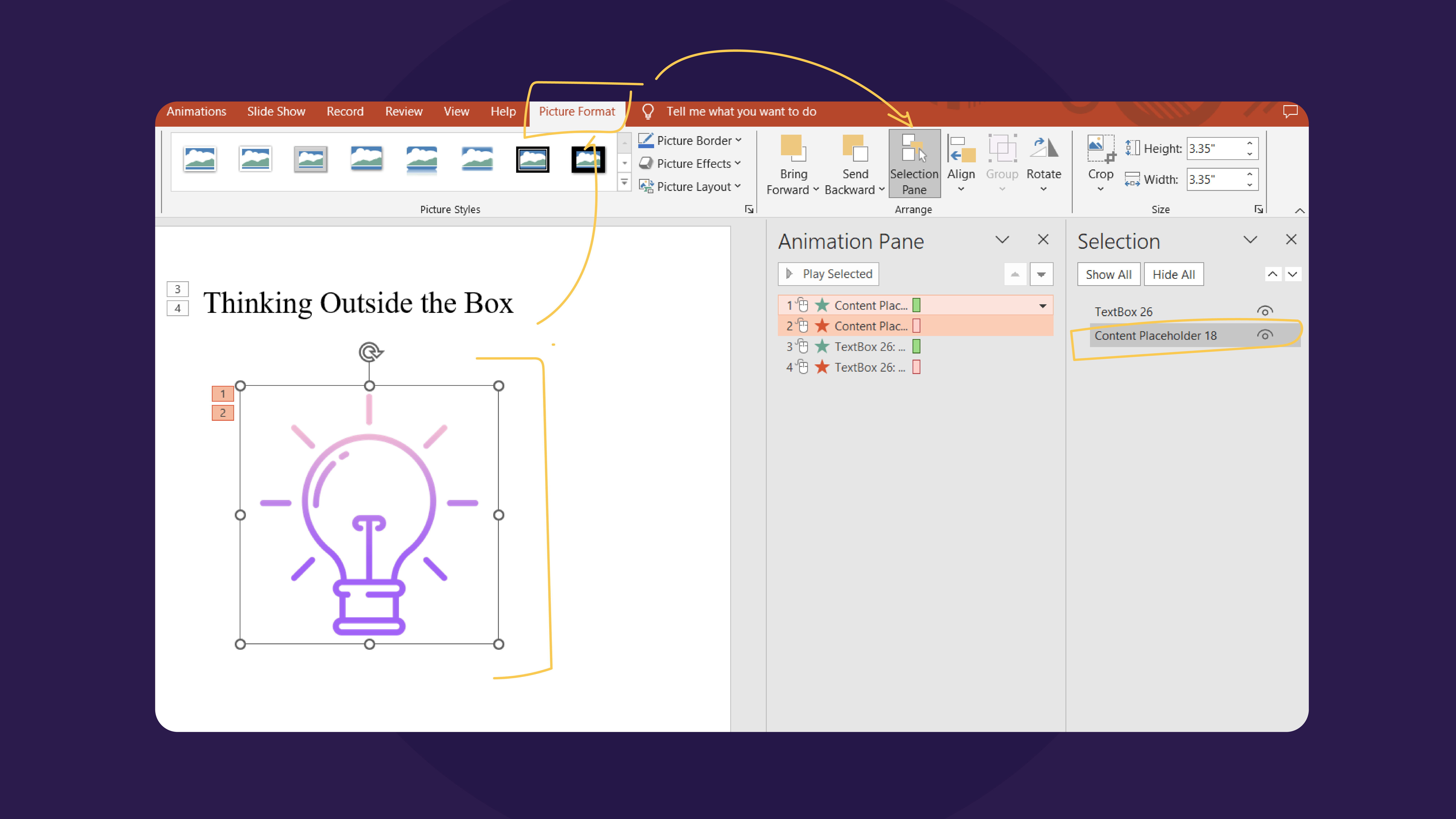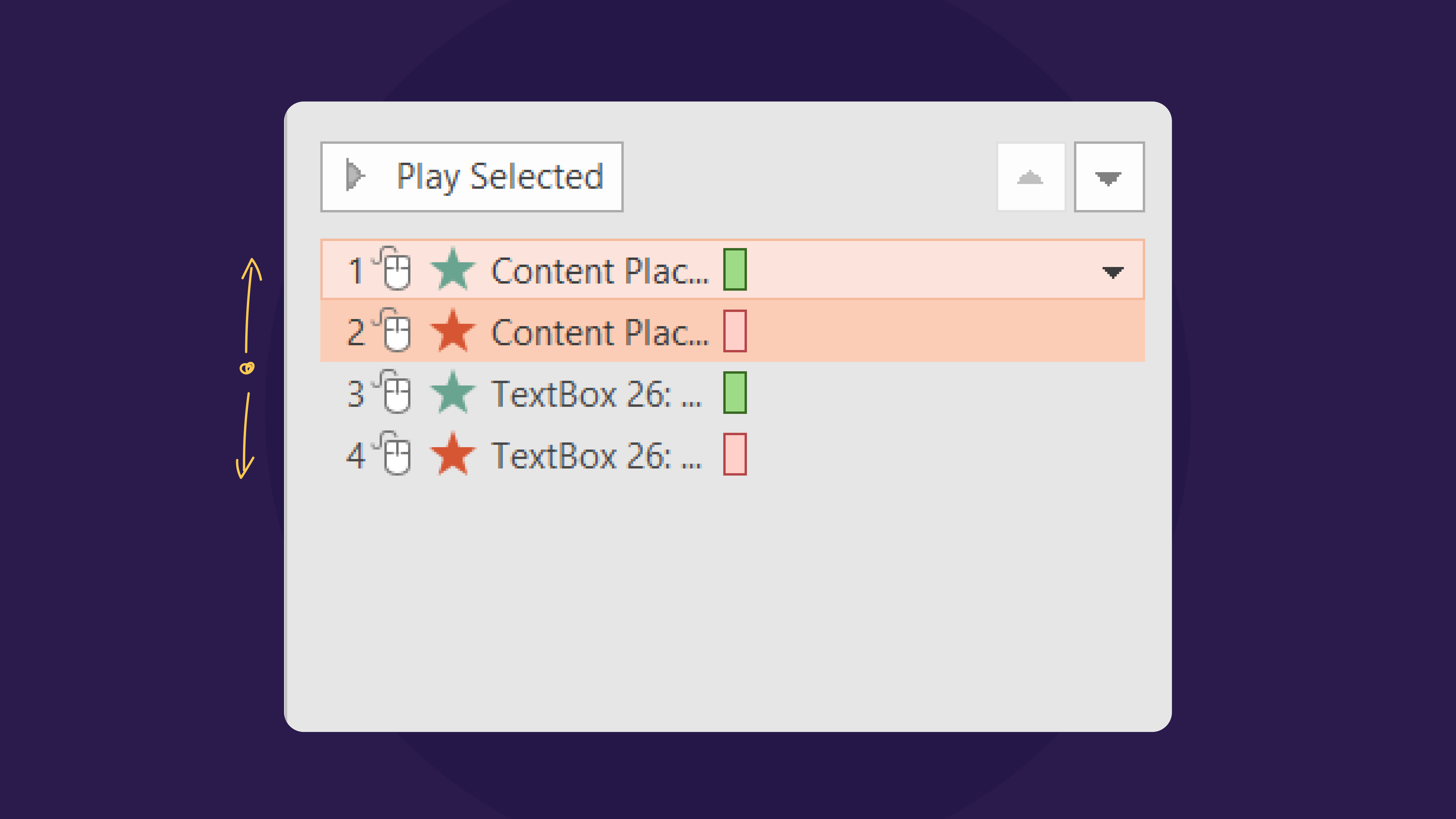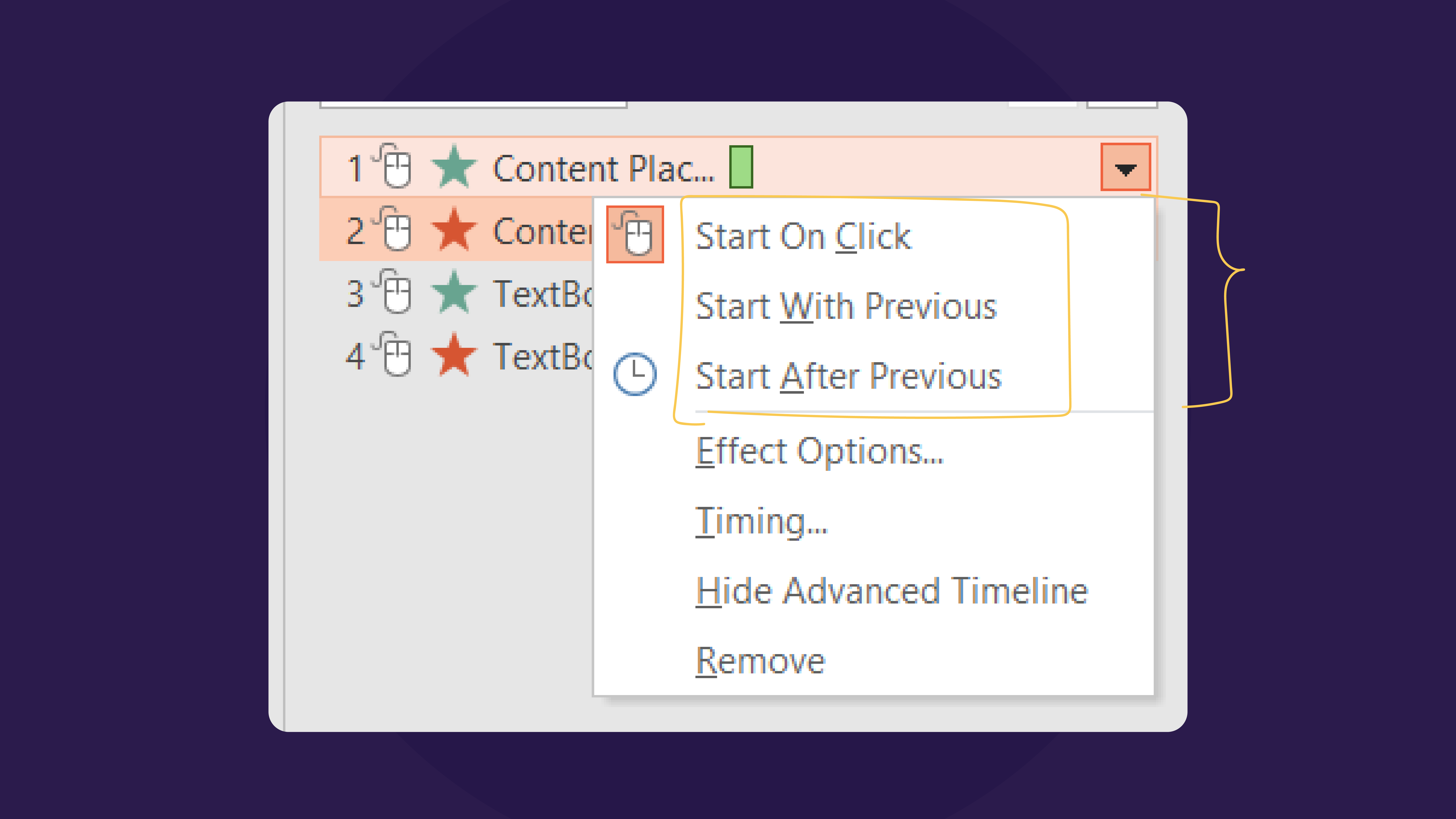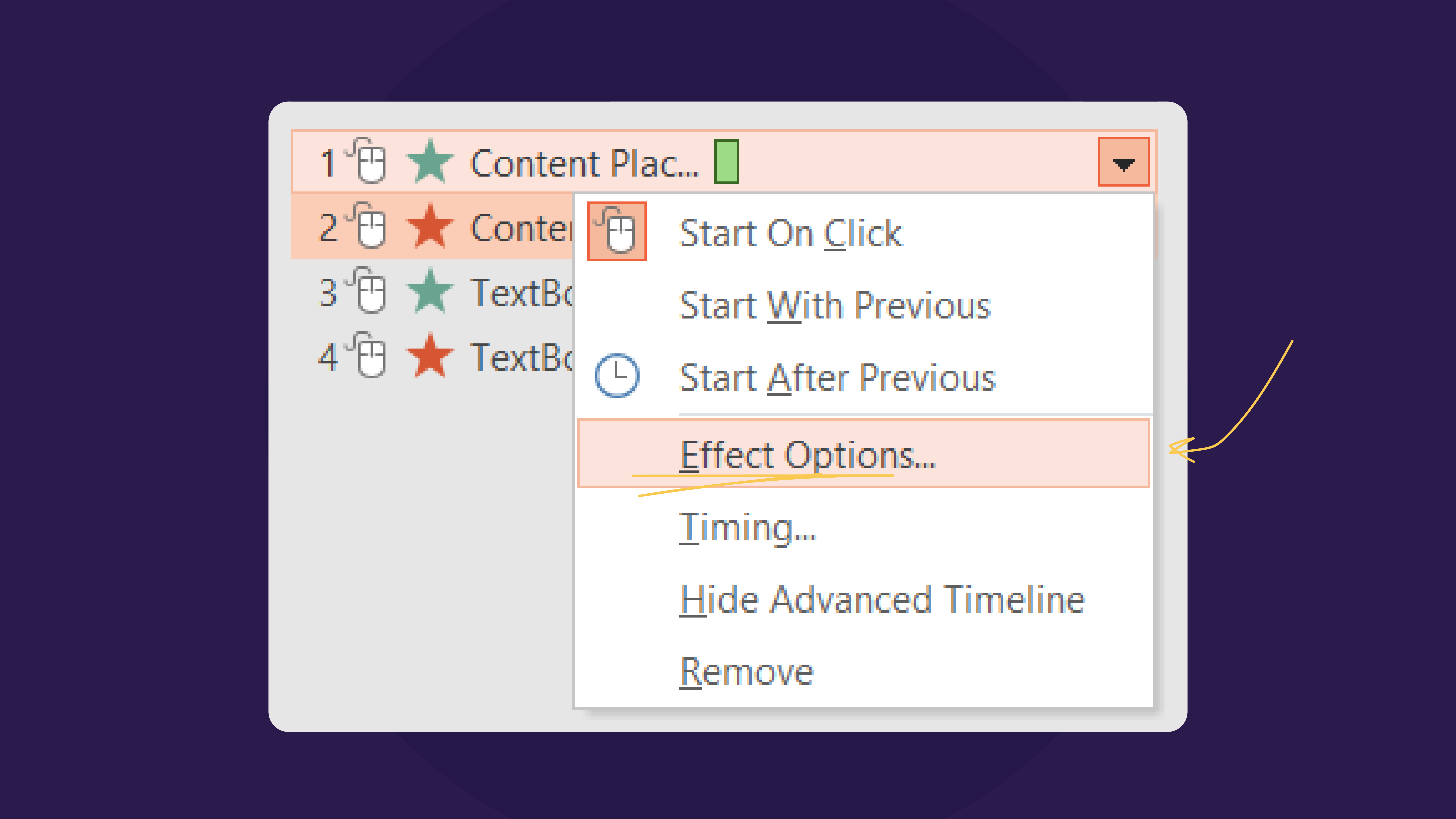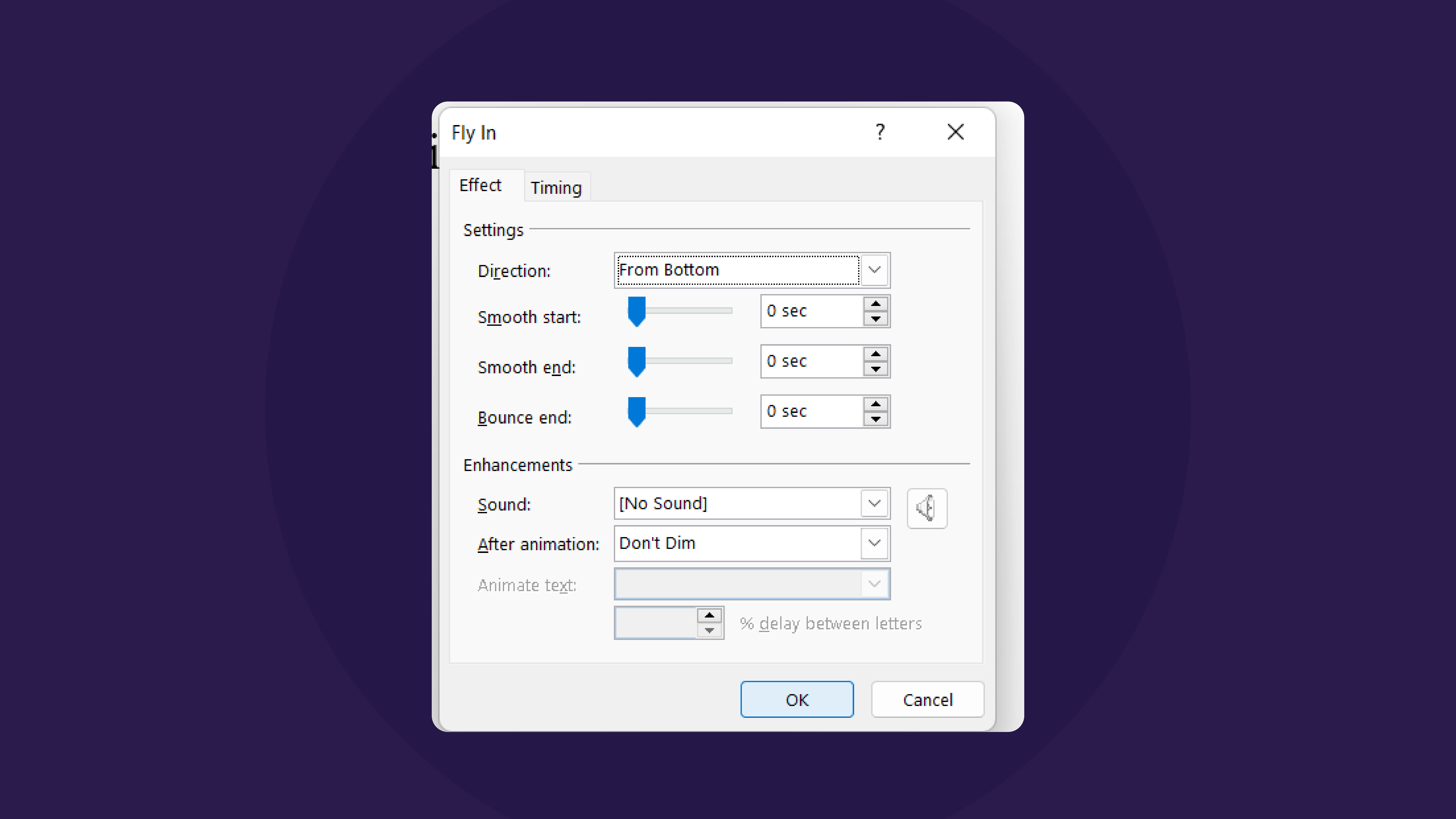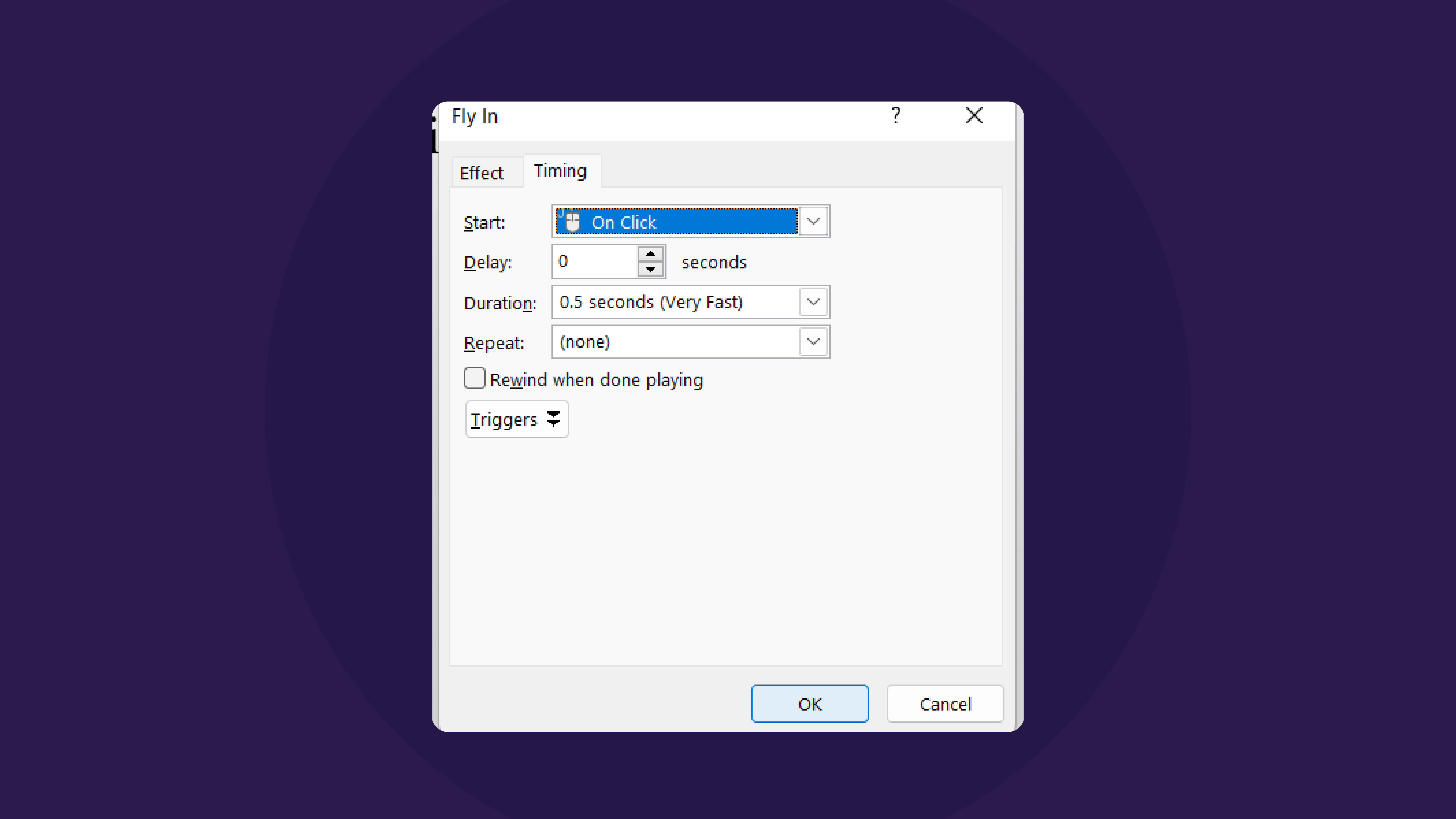09 May 2024
Looking to add a little panache to your PowerPoint presentation? Animation is one of the easiest ways to transform slides into more dynamic and engaging experiences for your audience. Whether you use them to reveal information or to enhance visual appeal, they play a huge role. Before going into the intricacies of PowerPoint animation, understanding their ins and outs is key to making information more digestible, so let us dive in!
Why use PowerPoint animations?
PowerPoint animations are an exciting feature that allows users to create more visually engaging slides. It is mostly used for two main reasons: controlling the flow of information and enhancing a slide’s appearance.
Animations control your slides’ pace, letting you reveal information at just the right time and keeping the pace lively and fluid. They also add visual interest and turn static slides into more dynamic presentations that maintain the audience’s attention. So, before you can use them, make sure you have a ready presentation to work on.
Getting started with PowerPoint animations
To start, there are two types of animated effects that you should be familiar with: transitions and animations.
Transitions are a type of animation that appears in between slides. You can go to the Transitions menu to find a variety of transition effects you can use. These are perfect for when you want a noticeable transition from slide to slide.
Animation is the type of PowerPoint feature used inside a slide. You can find all the options in the main Animation menu to use as action effects in a slide. Here, you can animate a specific element on a slide to highlight it.
The four types of animations
There are four main types of animation you can use, categorized into four types:
Entrance: This type relates to how an object enters a slide, such as the Bounce effect, where an object drops into a slide and bounces.
Emphasis: This type typically appears while an object is on the slide and is usually triggered by a mouse click. For example, an object starts to spin when a user clicks the mouse.
Exit: These animations control how an object leaves the slide, such as the Fade effect, where an object fades off-screen.
Motion paths: Similar to Emphasis effects, this type of effect controls how an object moves within a slide but it moves along a predetermined pathway.
To apply an animation to an object:
To apply animation to an object in PowerPoint, select the object you want to animate, then go to the Animations tab. Find the drop-down menu to browse through the options and select the effect you want to use.
The effect will then automatically apply to the object, and a small number will appear next to it to show that it has the effect.
In the Slide pane, a small star symbol will appear to show that this slide has an effect.
Effect options
Sometimes the effects have several options that you can change. For instance, you can select the direction of movement for the Fly In effect. You can access these options from the Effect Options section in the Animations tab.
Working with animations
If you want to add several animations to an object:
Usually, when you select a new animation from the group menu, it will replace an object’s current effect. But sometimes the occasion calls for more than one effect on an object, for example, having both the Entrance and Exit animations.
So to execute this, go to the Animations tab and find the Advanced Animations group. Click on Add Animation to add the appropriate effects from the available options.
In the case where an element has more than one effect, there will be different number icons for each effect. The order of the numbers also shows the order in which the effects will appear.
In case you want to reorder the effects, select the number of effects you want to switch and go back to the Animations tab. Under Reorder Animation, click the Move Earlier or Move Later options to switch the order.
To copy animations with the Animation Painter:
Sometimes you want to use the same effects on several objects; here, you do so by copying the effects using the Animation Painter.
Start by selecting the object with the effects you want to replicate, then go to the Animations tab and click on Animation Painter. Then go to the object you want to animate, whether on the same slide or different, and click on it, and you automatically apply the effects.
To preview the animations:
Any effects you applied will appear when you play the slides via slide show; however, you can still preview them from the current slide without needing to use the slide show.
First, go to the slide you want to preview, then, from the Animations tab, click on the Preview command. This way, you can view the animations for the current slide.
The Animation Pane
Navigating the Animation Pane will allow you to see and manage all the effects you are using on a slide. Here, you can modify or reorder the effects from the Animation Pane, which is very useful when you’re working with several different effects.
To open the Animation Pane:
On the Animations tab, find the Animation Pane button. The pane will appear on the right side and show all of the effects being applied on the current slide in the order in which they appear.
If you’re working with multiple animated objects, make sure to rename them in the Selection Pane to make reordering them much easier.
To find the Selection Pane, click on an element in the slide, then find the Format tab and click on Selection Pane. To rename an object, double-click, and type in a new name.
To reorder effects from the Animation Pane:
In the open Animation Pane, click on the desired effect and move it either up or down to reorder.
To change an effect’s start option:
Typically, an effect will automatically start playing when you click the mouse you present a slide show. If you are using several animations, you must click each time you want to start the next individual effect.
To have the effects play automatically, you can change the start option for each animation and have them play right after each other or even simultaneously.
First, go to the Animation Pane and choose an effect. Find the drop-down arrow right next to it.
Select one of the three start options. Start on Click starts the effect right as the mouse is clicked; Start With Previous starts the effect simultaneously with the previous one. Start After Previous starts the effect right after the one before it ends.
Usually, previewing animations plays through all the effects, but when set to Start on Click, it is best to test them by playing the slide show. To test, preview by playing the slideshow.
The Effect Options dialog box
To adjust your effects, you can find the Effect Options dialog box in the Animation Pane for more advanced settings.
Select an effect, click on the drop-down arrow, and select Effect Options.
Once the dialog box appears, click on the drop-down menus to choose the enhanced effects you prefer. Here, you can add sound effects, add additional effects, or animate texts.
Depending on the effect you choose, some can also have additional options you can change within them.
To change the effect timing:
From the Effect Options dialog box, select the Timing tab.
From here, you can add a delay before the effect starts, change the duration of the effect, and control whether the effect repeats.
Animation in PowerPoint is not just about adding motion to objects; rather, it is a strategic tool that significantly enhances a presentation. By controlling the flow of information, they improve a slide’s visual appeal and make the content more dynamic and captivating. Animation allows presenters to reveal data in pieces to ensure comprehension and highlight key points. Mastering PowerPoint animations encourages presenters to deliver impactful and inspiring presentations that leave a lasting impression. For more engaging and dynamic presentations, you can always contact our team at Prezlab to elevate your slides!





